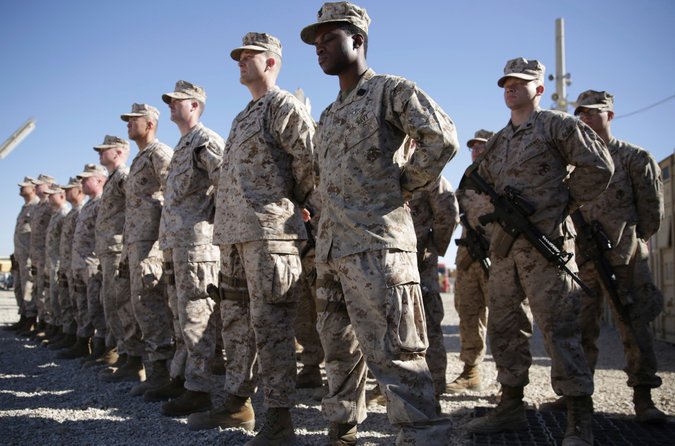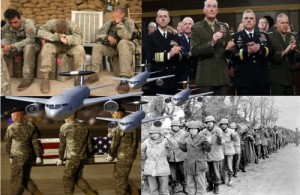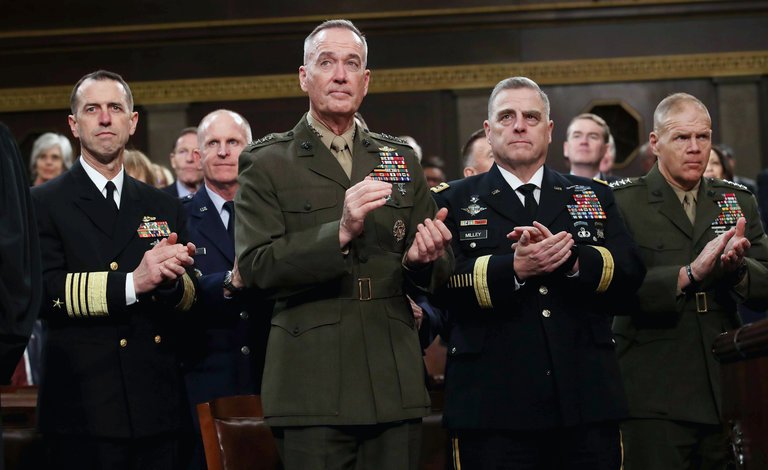WASHINGTON — A classified military exercise last week examined how American troops would mobilize and strike if ordered into a potential war on the Korean Peninsula, even as diplomatic overtures between the North and the Trump administration continue.
The war planning, known as a “tabletop exercise,” was held over several days in Hawaii. It included Gen. Mark A. Milley, the Army’s chief of staff, and Gen. Tony Thomas, the head of Special Operations Command.
They looked at a number of pitfalls that could hamper an American assault on North Korea’s well-entrenched military. Among them was the Pentagon’s limited ability to evacuate injured troops from the Korean Peninsula daily — a problem more acute if the North retaliated with chemical weapons, according to more than a half-dozen military and Defense Department officials familiar with the exercise.
Large numbers of surveillance aircraft would have to be moved from the Middle East and Africa to the Pacific to support ground troops. Planners also looked at how American forces stationed in South Korea and Japan would be involved.
Pentagon officials cautioned that the planning does not mean that a decision has been made to go to war over President Trump’s demands that North Korea rein in its nuclear ambitions.
A war with North Korea, Defense Secretary Jim Mattis has said, would be “catastrophic.” He and Gen. Joseph F. Dunford Jr., the chairman of the Joint Chiefs of Staff, have argued forcefully for using diplomacy to address Pyongyang’s nuclear program.
Commanders who attended the exercise in Hawaii were told that roughly 10,000 Americans could be wounded in combat in the opening days alone. And the number of civilian casualties, the generals were told, would likely be in the thousands or even hundreds of thousands.
The potential human costs of a war were so high that, at one point during the exercise, General Milley remarked that “the brutality of this will be beyond the experience of any living soldier,” according to officials who were involved.
So, too, would be the sheer logistical enterprise of moving thousands of American soldiers and equipment to the Korean Peninsula. Moreover, senior military officials worry that after 17 years in Afghanistan and Iraq, American troops have become far more used to counterinsurgency fighting than a land war against a state, as an attack on North Korea would likely bring.
But Mr. Mattis also has ordered top Pentagon leaders to be ready for any possible military action against North Korea. Already, ammunition has been pre-staged in the Pacific region for ground units.
And Mr. Trump’s words — “Military solutions are now fully in place, locked and loaded, should North Korea act unwisely,” he said in an August post on Twitter — have left senior officers and rank-and-file troops convinced that they need to accelerate their contingency planning.
A White House decision to attack is almost wholly dependent on cooperation from South Korea — not only in committing its troops or other assets to the battle but also accepting the risk of widespread bloodshed on its civilian population if the North fires back.
With a revival recently signaled on the long-dormant diplomatic track to resolve the Korean crisis, Pentagon officials said they did not want to disrupt any chance for a negotiated resolution. North Korea’s declaration at the end of the Winter Olympics that it was willing to open a dialogue with the United States offered a small amount of hope that the political pageantry of the Games would lead to more substantial results.
Mr. Trump’s response that the United States, too, was interested in talking compounded that hope. “We want to talk also,” Mr. Trump said earlier this week, but “only under the right conditions.”

But Trump administration officials still insist that the United States will not sit with North Korea unless Pyongyang agrees to open negotiations on its nuclear program, a condition the North has rejected.
And so the planning continues.
Mr. Mattis and other senior military leaders fear that a stray incident could spark a sudden conflict with the North. Of particular concern is the “ladder of escalation” — a chain of actions prompted by the shooting down of a North Korean or American jet, or sinking of a ship of which Mr. Mattis and other Pentagon leaders could quickly lose control.
Harsh new sanctions that the Trump administration announced last week are a prime example.
The economic penalties target 28 ships that are registered in China and seven other countries, and intend to further cut off North Korea’s imports of oil and exports of coal. But by going after the shipments, the United States is edging closer to the imposition of an economic blockade on the North.
While Treasury Secretary Steven Mnuchin stopped short of saying the United States Navy would forcibly board ships on the high seas, administration officials privately have said that sailors may yet be called upon to do so, if hostile foreign vessels are suspected of transporting certain material to North Korea.
That, Defense Department officials say, could easily spark an incident that could escalate.
Mr. Trump recently referred to another type of incident that American officials fear could spark a war.
During a speech in Seoul last year, he brought up North Korea’s 1969 downing an American spy plane that had been flying over the Sea of Japan. All 31 Americans aboard were killed in the attack by two North Korean MiGs.
At the time, President Richard M. Nixon chose not to retaliate. It is unclear if Mr. Trump would follow the same course; in bringing up the episode last year, he warned, “Do not underestimate us, and do not try us.”
The Hawaii planning exercise looked at a wide range of military capabilities and missions. They included:
■ How many conventional and Special Operations forces could be deployed, in phases, to target North Korean nuclear sites.
■ Whether the Army’s 82nd and 101st Airborne Divisions could be charged with fighting in tunnels.
■ Exhaustive plans to take down North Korea’s integrated air defenses, allowing American manned and unmanned aircraft into the reclusive country.
■ Plans for the morbid but necessary details of personnel recovery plans, such as if pilots are shot down, and the evacuation of the dead and wounded.
In a meeting on Monday in “the Tank” — a secured space in the Pentagon where the Joint Chiefs of Staff discuss top-secret issues — General Milley told senior military leaders about the exercise but did not outline details of the war plans, officials said. The Army holds around eight tabletop exercises every year for different countries and scenarios.
In April, a larger meeting is being planned between Mr. Mattis and the global combatant commanders. It is one of the periodic meetings that Mr. Mattis has with the top military brass, but is expected to heavily focus on North Korea.
Special Operations forces have been briefed on some details of a plan that is separate but related to a potential strike on North Korea, officials said. However, Special Operations forces have yet to change course from their current operations.
Although the planning is continuing apace, a military operation against North Korea has yet to be given a formal name. Special Operations units, however, have already been assigned to specific task forces with names such as Trident and Falcon.



